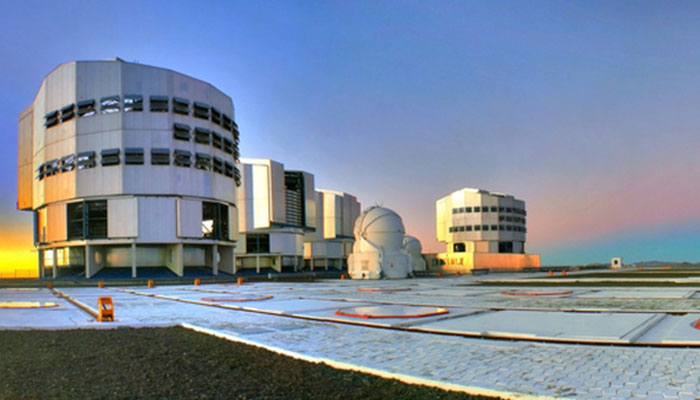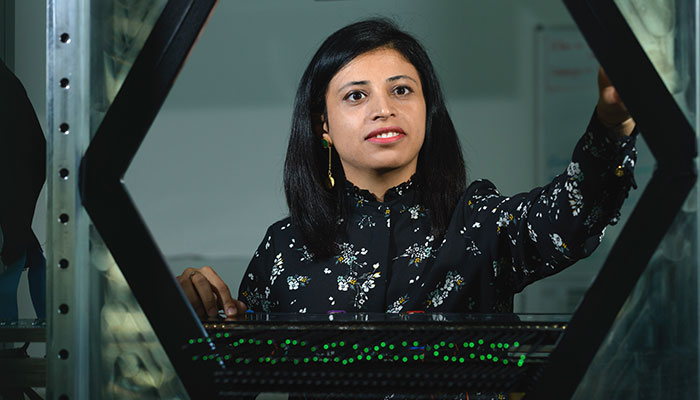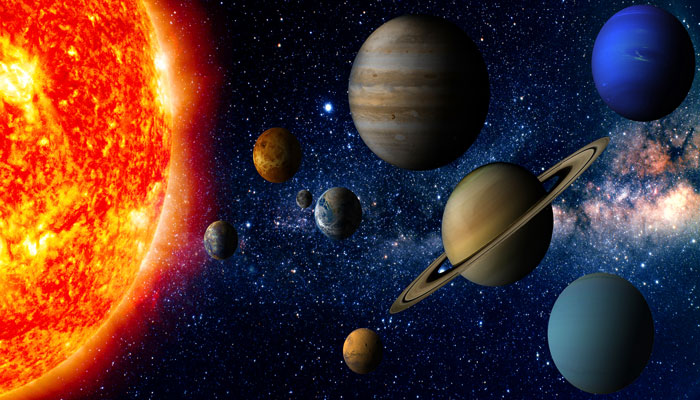The scientists working in Chile are trying to determine how stars and entire galaxies are formed, and hunting for new exoplanets (those that orbit other stars).

Desert star-gazing: The four Very Large Telescopes (VLTs) and auxiliary equipment at the Paranal Observatory in Chile's Atacama Desert. Image: Angel Rafael Lopez Sanchez
Macquarie University’s Dr Katrina Sealey knows these gigantic telescopes well – she used them to complete her own research on quasars, which are among the brightest objects in the universe.
“There's nothing more mind-blowing than going to an observatory high on a mountain, and taking that step outside of the control room and just looking up at the most brilliant, spectacular night sky and know that you're probing into the deep universe and trying to solve problems and mysteries that we don't yet know the answers to,” says Dr Sealey.
The largest of the Chilean telescopes have a mirror greater than eight metres across, and produce monumental amounts of complex data. How do scientists make sense of it all?
Enter Macquarie and Australian National University, who are leading the Australian Astronomical Optics (AAO) consortium. Late last year, the AAO won a three-year, $3 million contract from the European Southern Observatory (ESO) to fine-tune their telescopes to provide the best possible images for study.
Its' one of the great things about Chile being a very long, thin country - they build the telescopes on the mountains on the edge of a desert
The project is the first of its kind to be led by the new-look AAO, and will tap into the deep knowledge bank of astronomers and instrumentation experts at Macquarie, ANU, and the University of Sydney. A key part of the equation is Australia’s most powerful telescope, located at the Siding Spring Observatory near Coonabarabran.
Translating starlight into science
Collecting data with powerful telescopes is one thing. Understanding what it means is another.
“When a telescope looks up at the sky, it takes either images or spectra (different light waves) and produces raw data,” explains Dr Sealey, who is Head of Research Data and Software at AAO-Macquarie.
- First accurate 3D map of the Milky Way reveals a warped galaxy
- Coffee waste to coffee cups? The ultimate recycle
“The raw data needs to be calibrated so that it can be usable by the astronomers for research purposes. For this project, we're being asked to take all of the data generated by these telescopes, and make it into the best possible product for researchers to do science.”
The AAO researchers will produce bespoke software to be used on more than a dozen instruments at the Paranal Observatory located in Chile’s Atacama Desert, 2635m above sea level. It is the second largest laboratory of its kind in the world, and a magnet for leading astronomers.
The perfect place for stargazing
What makes Chile the perfect base for conducting astronomical research? You could say that the stars have aligned.
“It's one of the great things about Chile being a very long, thin country. They build the telescopes on the mountains on the edge of a desert,” explains Dr Sealey.
“The telescopes are up very high, and the higher the telescope is, the thinner the atmosphere and the less disturbance you get. And then being on the edge of a desert means that you end up with very still, dry air conditions which equals very stable air going across the telescope. It's all about making the image that you see as sharp and as clear as possible.”
A data revolution
“When I started, my very first astronomical data was actually stored on a tape,” admits Dr Sealey with a laugh.
Not only have the methods for data storage transformed; the amount of information being recorded has grown exponentially.
“Five years ago we would've been talking in megabytes, and at the moment over the course of a week we might get terabytes of data from optical observing which equals about a petabyte (one million gigabytes) a year.

Mind blowing work: Astronomer Dr Katrina Sealey and colleagues at AAO are probing into the deep universe and trying to solve problems and mysteries that are at present unanswerable.
“So we're collecting phenomenal amounts of data. All of this information needs to be stored, and it needs to be managed so that it's all backed up, available for future use. And then all the raw data needs to be converted to become useful for scientific research.”
Dr Sealey says the new-look AAO is engineered to become a “one-stop shop” for capturing, analysing, and harnessing the power of astronomical data. The potential for machine learning to improve how and when relevant data is accessed is another exciting development.
“The AAO software team has different layers and capabilities. We develop software and code for controlling telescopes. We then write software to better understand the data that comes off the instruments, as we are doing for the Chilean telescopes. And we also lead the storage of 44 years of data gathered by the Siding Spring Observatory.”
Having been selected by the ESO to conduct this important “pipeline” work demonstrates that AAO-Macquarie and its consortium partners are online and open for business.
“It's a great project to get us all kick-started and working as one new group,” says Dr Sealey.



